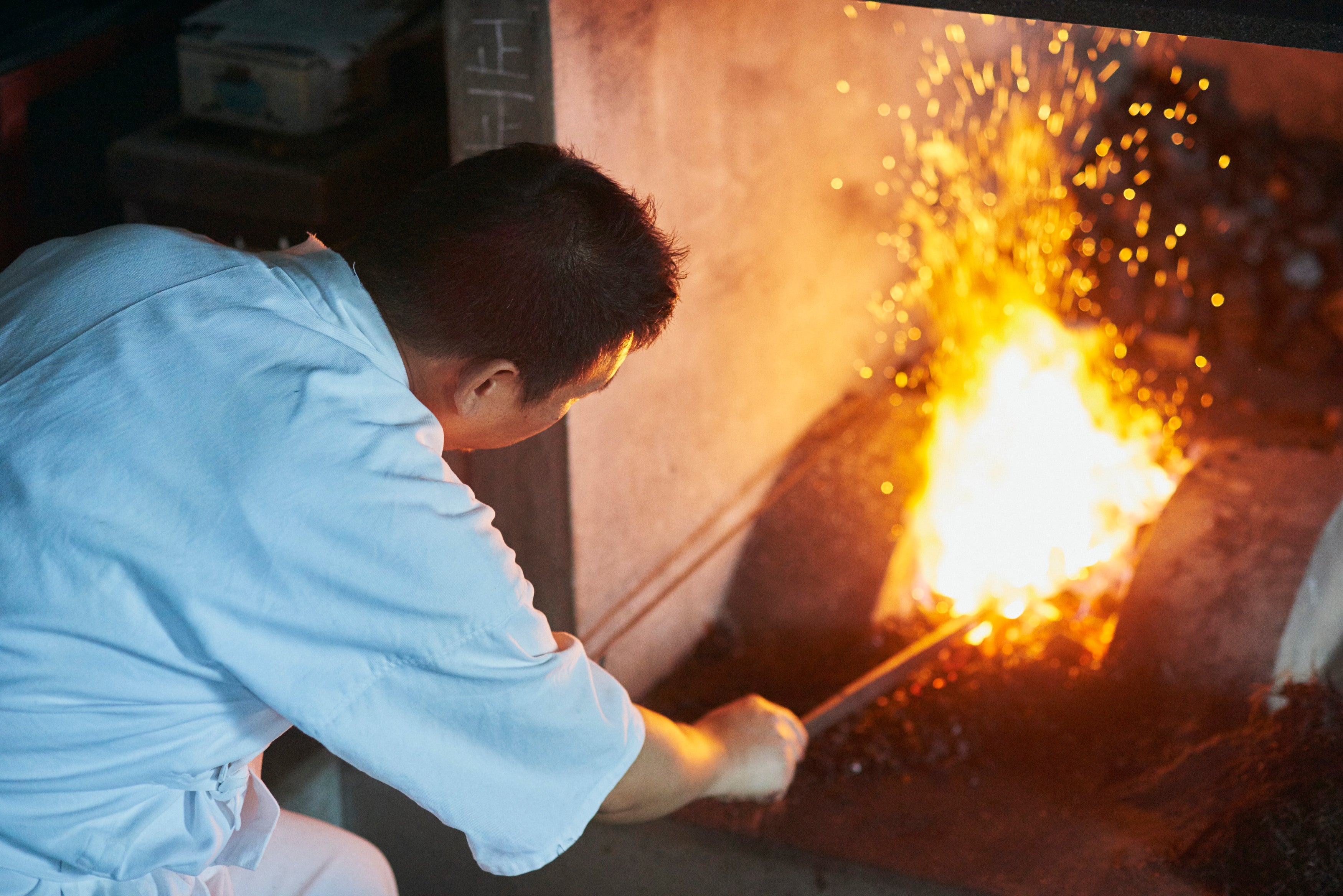Craftsmanship of the Katana Sword

The forging materials of Japanese samurai swords are made of a mixture of different materials. Due to the different materials, the purpose of bending the blade is achieved, and then multiple procedures such as blade making, beating, quenching, and grinding are required to achieve a handle without a handle without a sheath.

The various materials used in katana swords result in different overall carbon content, so repeated heating, softening, and folding are required to remove impurities and balance carbon. After folding the steel, it is usually at least 7 or 8 times, and as many as 20 or 30 times, each time it takes hundreds of hammers, and the unique pattern on the samurai sword is hammered in this way.

The quenching temperature of Japanese samurai swords is about 850°C, but most of the outer hard steels only have 0.75% carbon content, and the hardness of the knife edge is only about HRC58 degrees.Therefore, it is necessary to infiltrate a little carbon, perform solid carburizing treatment on the knife edge, increase the carbon content of the knife edge and increase the sharpness of the knife edge, and the hardness of HRC60 degrees or higher can be achieved with the same quenching temperature.In this way, the best balance can be found between the sharpness and the brittleness of the blade, and the blade will not break down too much when cutting, and the elasticity of the blade can also withstand the impact of buffering the opponent's blade.

Due to the difference in the size of the sword, the steel selected, and the hardness pursued, we ultimately need to use local heat treatment to make up for the lack of toughness. The so-called "clay tempered" is to cover the position of the blade without high hardness with the prepared clay, and then heat the blade to a specific temperature. When the red-hot blade enters the water, the naked part cools quickly, but the part covered with clay The temperature change will not be very obvious, resulting in different hardness from the bare parts, so as to achieve the effect of combining rigidity and flexibility. In the case of high hardness of the blade, the good toughness of the blade can still be maintained. The clay tempered of high-end samurai swords is made by the uneven covering of soil to make it bend naturally when quenched. The ultimate goal is to make the hardness of the blade and the blade different.
Apply the clay to the blade and let it dry. The sword is then repeatedly passed through a high temperature charcoal fire for a specified period of time until it reaches the temperature required by the craftsman. Finally, the blade is inserted into the water, precisely calibrated to complement the time spent in the fire at a specific temperature. The combination of these three factors determines the form of the hamon, creating the visual result of the tempering process used in much of swordsmithing.

Exquisite craftsmanship has resulted in exquisite katana swords, many of which are both weapons and treasures handed down from generation to generation.
All Japanese katana swords from Coolkatana are hand-forged by swordsmiths of Longquan. Different types of samurai swords can be collected as handicrafts, or for martial arts practice use. Buy authentic Japanese swords for sale!
